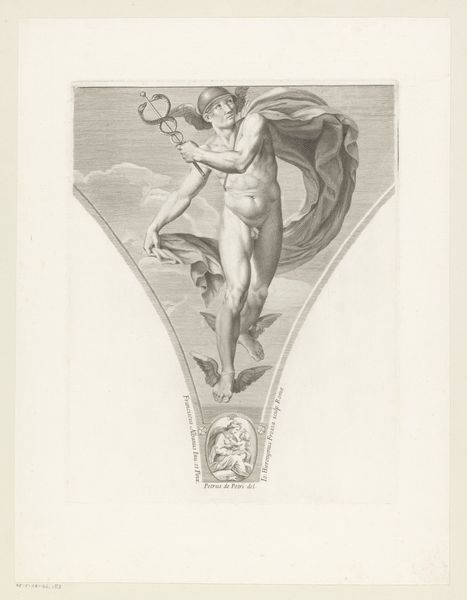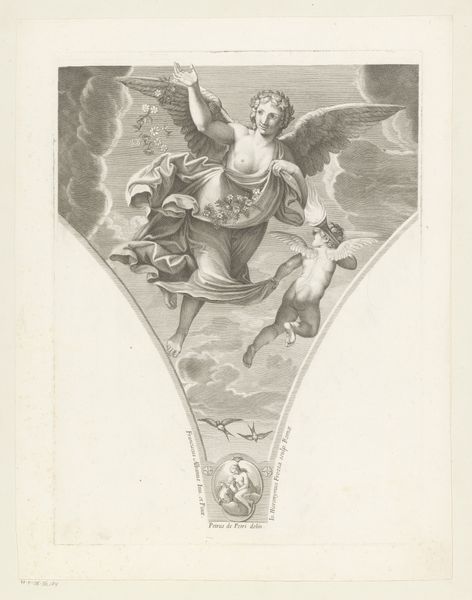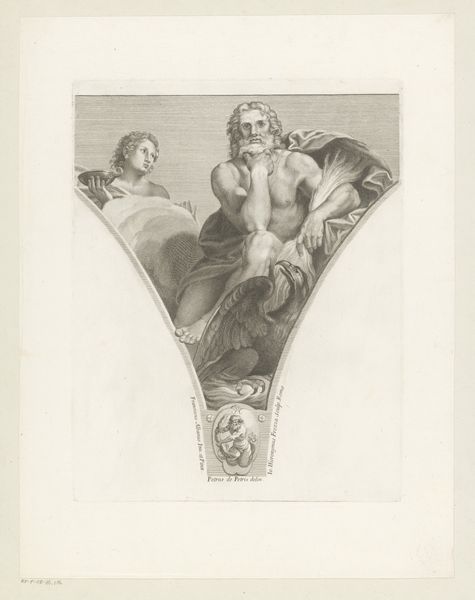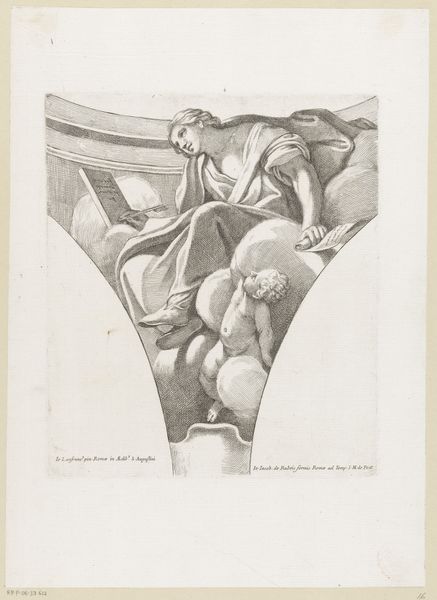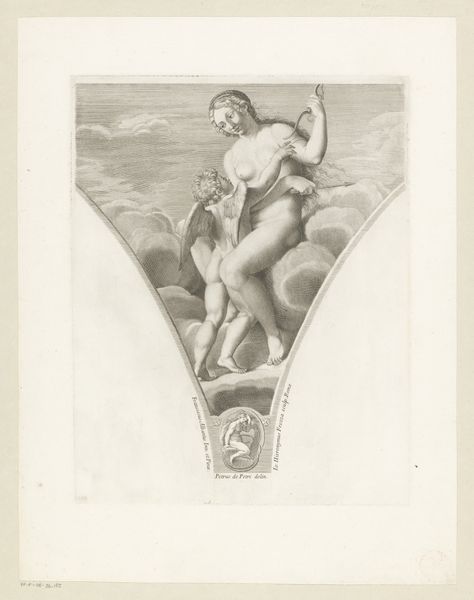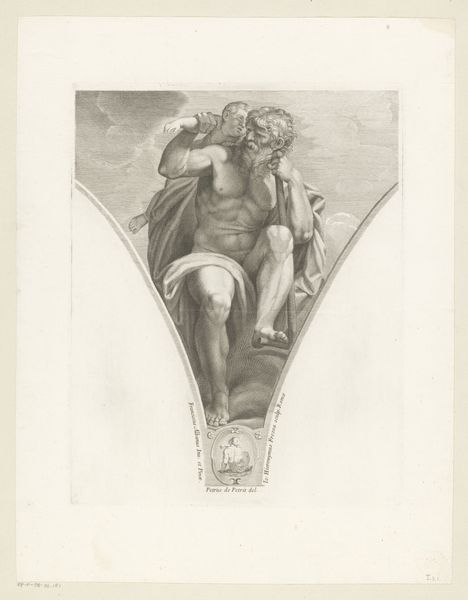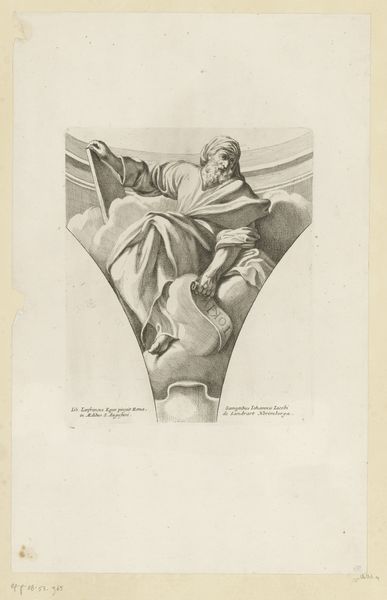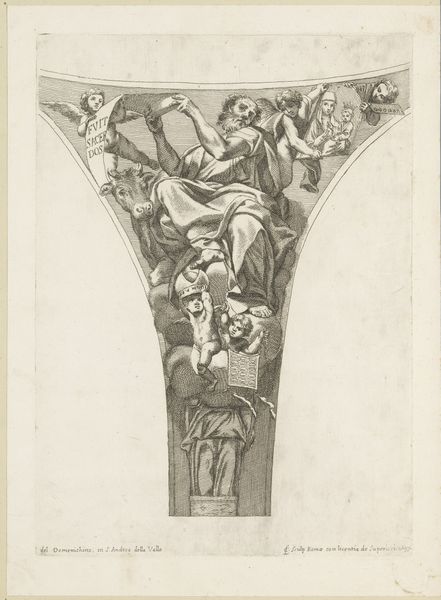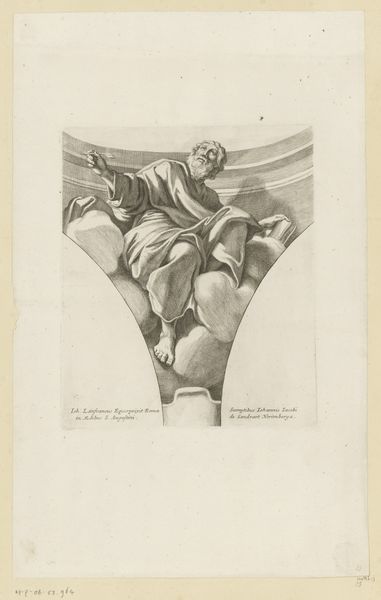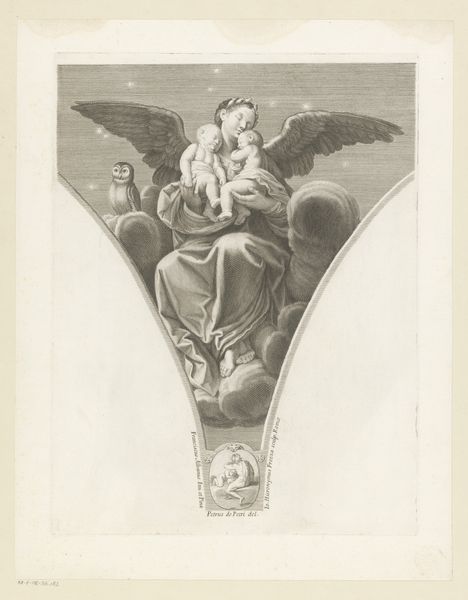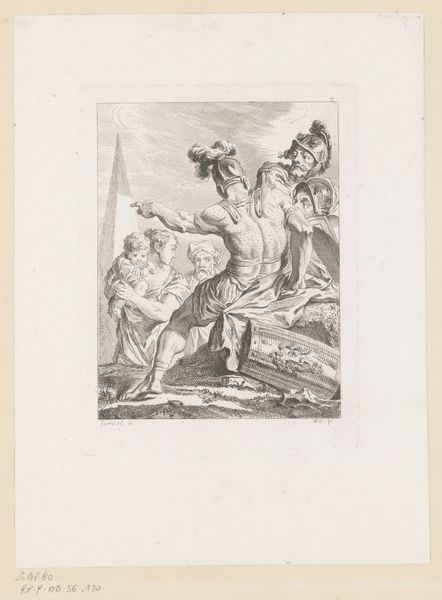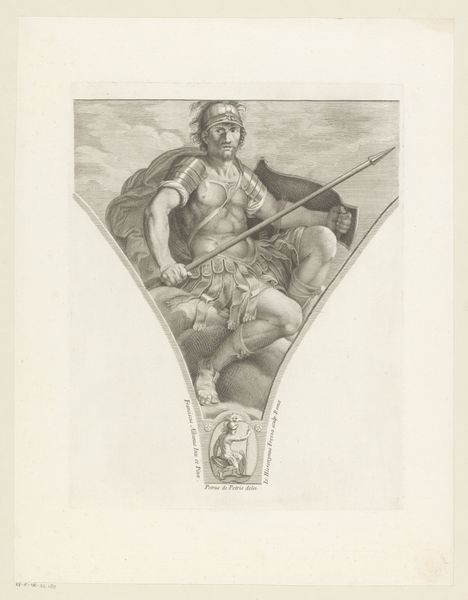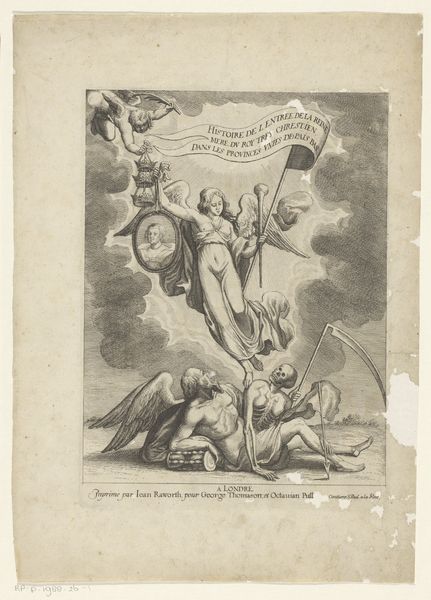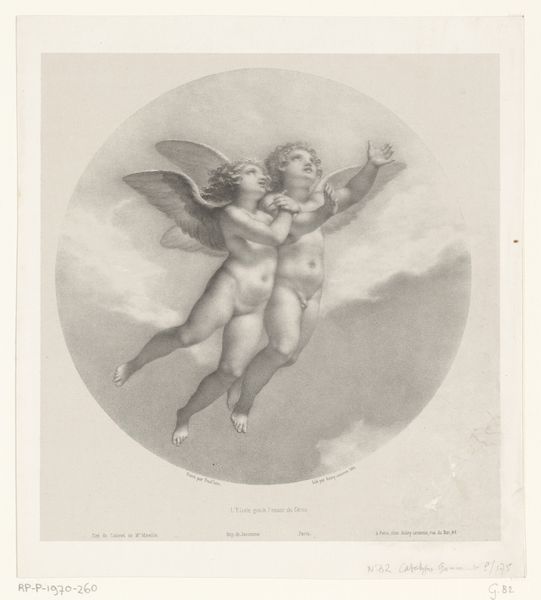
print, engraving
#
allegory
#
baroque
# print
#
figuration
#
history-painting
#
nude
#
engraving
Dimensions: height 359 mm, width 282 mm
Copyright: Rijks Museum: Open Domain
Editor: This is Giovanni Girolamo Frezza’s "Diana," an engraving from 1704. She seems so confident, doesn’t she? With her bow drawn against the clouds… What statements like this were artists of the time making about imagery and power? Curator: The engraving exists, first and foremost, within a very specific context. This image is an allegorical one, drawing on the well-known Greco-Roman pantheon to make specific arguments. It evokes Diana, a goddess of the hunt and the moon, associating these qualities, perhaps, with a patron or ideal. Consider also the political uses of classicism; what image of governance, or power, is it intended to evoke? Editor: I hadn’t thought of it as being a potential symbol for someone powerful at the time. Almost like propaganda? Curator: Not necessarily explicit propaganda, but certainly operating within a system of power and patronage. Prints like these were often commissioned or produced for dissemination to promote particular ideas or individuals, either directly or symbolically. Consider where this image might have been displayed and who would have had access to it. Editor: So, its impact depended on who was able to see it and interpret it? Almost like coded messaging for the elite? Curator: Precisely. Understanding the socio-political dynamics is key to unlocking the deeper meaning of such art. Consider who benefitted from promoting this particular image of idealized power and what their specific goals might have been. Editor: I guess analyzing the context of viewership reveals much more about the intent behind art like this. It reframes everything! Curator: Indeed, examining how museums, galleries, and politics influence the reception of art, that's often the most interesting story!
Comments
No comments
Be the first to comment and join the conversation on the ultimate creative platform.
